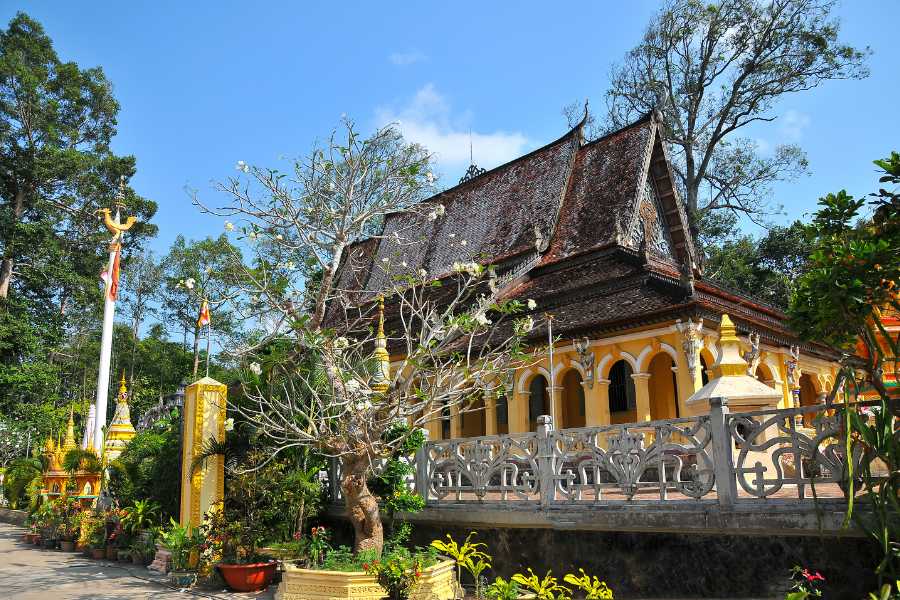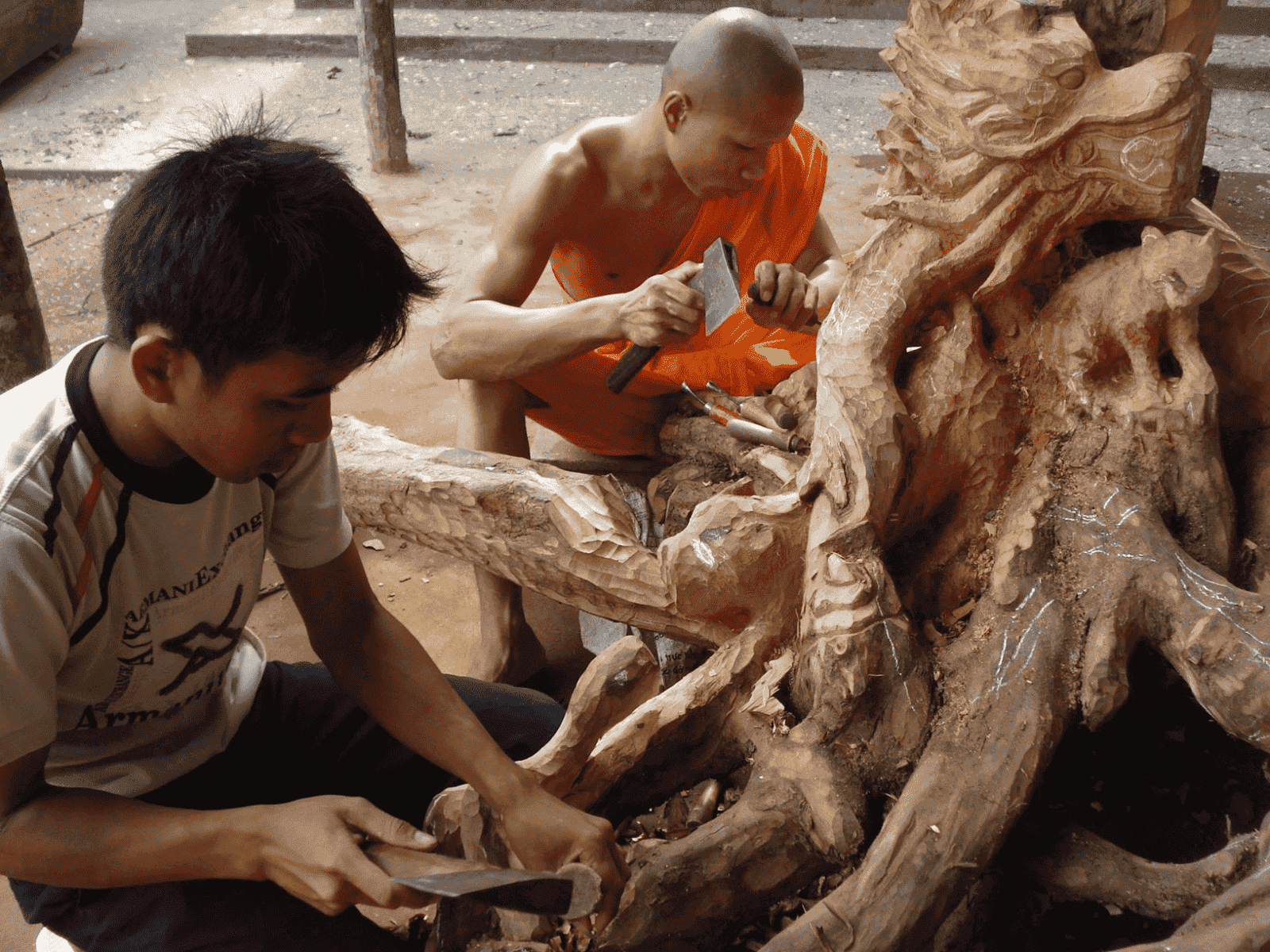Hang Pagoda is one of the province's well-known scenery and landmarks and a must-see. Threeland Travel will take you to Tra Vinh tour and see why this place is so unique
TABLE OF CONTENTS
Hang Pagoda is one of the province's well-known scenery and landmarks and a must-see. Threeland Travel will take you to Tra Vinh tour and see why this place is so unique.

Tra Vinh Province, where a large population of ethnic Khmers reside, has a distinctive beauty that is reflected in its distinctive architectural creations.
Hang Pagoda is one of the province's well-known scenery and landmarks and a must-see.
The pagoda was built in 1637 and is also known as Kompông Chrây Pagoda. Tra Vinh Town is about 5 miles away.
Green woodland totally encircles the 2 hectare pagoda.
The western side gate, which faces National Highway 54, is constructed to resemble a system of three caverns, thus the name Hang (Cave) Pagoda. The two sides and the middle gate are smaller caverns, respectively. The walls of all three gates are 12 meters thick, giving them a substantial, cave-like appearance.
Hang Pagoda stands out among the other Khmer pagodas in the province because to its artistically designed arched pagoda gate. It has significant historical and religious importance.
The cave gate is a "relic" that demonstrates that Tra Vinh Khmer Theravada Buddhism has some Brahminic roots since, in earlier times, Brahmin monks sometimes lived in seclusion in dark, empty caverns.

The pagoda's main hall was elevated and had numerous steps leading up to it. It was decorated with numerous patterns and motifs. The main hall's roof is made up of numerous overlapping layers, and a grand tower stands on top of them all.
The Shakyamuni Buddha shrine is located in the center of the main hall, which has two rows of towering columns within.
A population of 12 animals is grouped in the shape of a boat across from the main hall.
Like other Khmer pagodas, Hang Pagoda serves as a place of learning, moral instruction, and the preservation of the traditional arts and cultures of the Khmer people in addition to being a place of worship and religious belief.
There is a sizable classroom and roughly 20 modest stilt homes inside the pagoda for the local Khmer to utilize as a place of worship and practice.

There are around 7 hectares of Hang Pagoda's holdings. Indeed, it is a primitive forest with several indigenous plant species, including bamboo and uncommon wood trees. They are squeezed into a variety of strata that are extremely beneficial to the biosphere and serve as a natural gene bank for future generations.
The wood carving studio, which has been in business for close to 30 years and produces many items that are well-known in the Vietnamese fine art market, is another draw for tourists to this pagoda. It also features a carefully enforced "bird sanctuary," which is home to a variety of birds and bats.
Crows and countless bats have made the woodland on the Hang Pagoda estates their home since the turn of the 20th century. They venture outside at night to find food. They dangle from the tree branches all day long.
But for some reason, not many bats remained after that.
Several different bird species have made the woodland surrounding Hang Pagoda their home since the 1990s. The pagoda creates a tranquil natural habitat for flocks of birds to reside in by outlining very tight criteria for the conservation of trees and birds in the forest. There are around ten thousand different species of birds. The majority are herons, red-necked storks, white storks, and ivory storks.

More and more birds are entering the pagoda, where they are loved and safeguarded by people. Even the recently planted bonsai area in front of the main hall and the monks' residence is where they build their nests.
Visitors to Hang Pagoda will get the chance to see the monks of the wood-carving studio produce one-of-a-kind works of art from tree roots.

The art wood-carving workshop has created hundreds of distinct works throughout its almost 30-year history. The traditional visual arts of the Khmer ethnic group are present in all the workshop's creations.
Tourists take a stroll around the pagoda after visiting the workshop. The birds spread out in the morning, causing the entire woodland to become raucous as they search for food in the adjacent fields and waterways.
Tra Vinh is home to almost 60 pagodas belonging to different ethnic groups in addition to 150 Khmer pagodas. Visitors get a sense of being lost in the "Land of Buddha," immersed in the distinctive spiritual and cultural realm of the Khmer people with their distinctive old pagodas.
Tra Vinh tour is the perfect tour for travelers who enjoy travelling and learning about spiritual culture.










